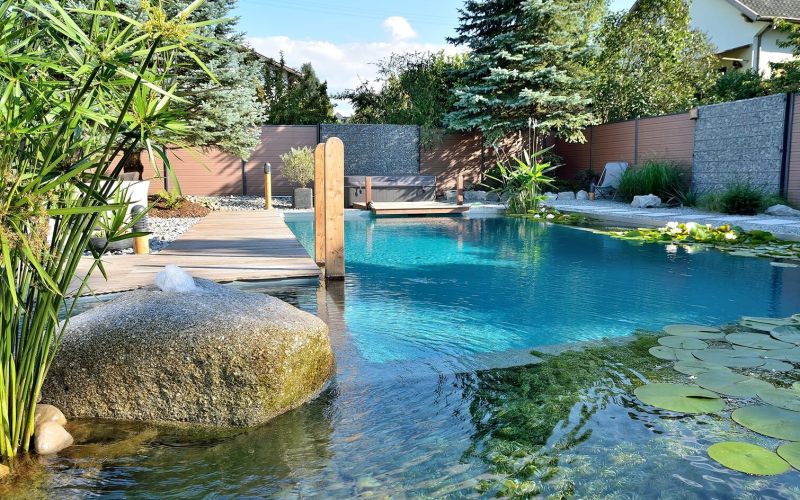Maintaining a salt water pool is essential to ensure its hygiene and longevity. A salt water pool offers numerous benefits, including lower chlorine levels and softer water, but it also requires regular care and attention. In this article, we will discuss the essential maintenance and conservation practices needed to keep a salt water pool in perfect hygienic condition.
Understanding the Basics of Salt Water Pool Maintenance
A salt water pool uses a salt chlorinator to convert salt into chlorine, which sanitizes the water. This process creates a more gentle and enjoyable swimming experience compared to traditional chlorine pools. However, to maintain the hygiene and clarity of a salt water pool, several key steps must be followed.
- Regularly check and adjust salt levels: The salt concentration in a salt water pool should be maintained within the range specified by the manufacturer of the salt chlorinator, typically between 2,500 and 3,500 parts per million (ppm). Too little salt can reduce the efficiency of chlorine production, while too much can lead to corrosion of pool equipment.
- Monitor chlorine levels: Even though a salt water pool produces its own chlorine, it is essential to regularly test the chlorine levels to ensure they remain between 1 and 3 ppm. Low chlorine levels can result in algae growth and bacterial contamination, while high levels can cause skin and eye irritation.
- Balance pH levels: The pH level of a salt water pool should be maintained between 7.2 and 7.6. A pH level that is too high can reduce the effectiveness of chlorine, while a low pH can cause corrosion of the pool’s surfaces and equipment. Regular testing and adjustment of pH levels using pH increasers or decreasers are crucial.
- Maintain alkalinity and calcium hardness: Total alkalinity should be kept between 80 and 120 ppm, and calcium hardness should be between 200 and 400 ppm. Proper alkalinity levels help stabilize the pH, while appropriate calcium hardness prevents scaling and corrosion.
Cleaning and conserving your salt water pool
Regular cleaning and conservation practices are vital to keep a salt water pool in perfect hygienic condition. This includes routine cleaning of the pool surfaces, equipment maintenance, and water filtration.
- Skim and brush the pool: Debris such as leaves, insects, and dirt can accumulate on the water surface and pool walls. Skimming the surface daily and brushing the walls and floor weekly help prevent algae buildup and keep the pool clean.
- Vacuum the pool: Use a pool vacuum to remove debris from the pool floor. This should be done weekly or as needed, depending on the amount of debris present. Automatic pool cleaners can make this task easier and more efficient.
- Clean the salt chlorinator cell: The salt chlorinator cell can accumulate scale and debris over time, reducing its efficiency. It should be inspected and cleaned every three months or as recommended by the manufacturer. Cleaning involves soaking the cell in a solution of diluted muriatic acid or a commercial cell cleaner.
- Maintain the pool filter: The pool filter plays a crucial role in removing impurities from the water. Depending on the type of filter (sand, cartridge, or diatomaceous earth), it should be backwashed, cleaned, or replaced regularly. Sand filters should be backwashed every 1-2 weeks, cartridge filters cleaned every 2-4 weeks, and diatomaceous earth filters backwashed and recharged every 1-2 months.
- Check and maintain pool equipment: Regularly inspect and maintain pool equipment, including the pump, heater, and plumbing. Ensure there are no leaks, and clean the pump strainer basket weekly to maintain proper water circulation and filtration.

Seasonal maintenance
Seasonal maintenance is essential to prepare your pool for different weather conditions and to ensure its longevity.
- Opening the pool for summer: Before opening the pool for the summer, remove the pool cover and clean it thoroughly. Test and balance the water chemistry, inspect and clean the salt chlorinator cell, and ensure all equipment is in good working condition. Shock the pool with a high dose of chlorine to eliminate any residual contaminants.
- Closing the pool for winter: When closing the pool for the winter, lower the water level to below the skimmer, add a winterizing chemical kit, and thoroughly clean the pool. Remove and store all pool accessories, and cover the pool with a winter cover to protect it from debris and harsh weather.
In conclusion, maintaining a salt water pool requires regular attention to water chemistry, routine cleaning, and proper care of pool equipment. By following these essential maintenance and conservation practices, you can ensure that your salt water pool remains in perfect hygienic condition, providing a safe and enjoyable swimming experience for years to come.
Visit: water kefir.

